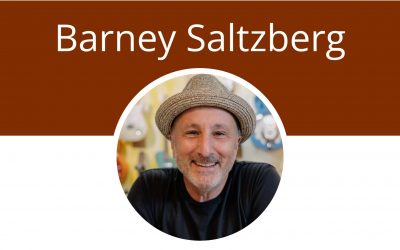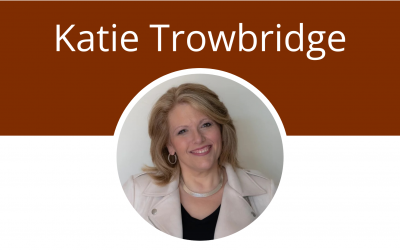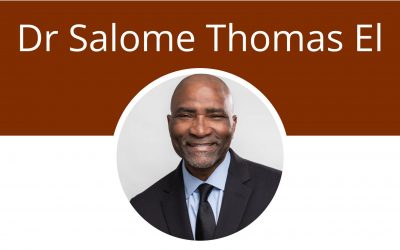Season 7 | LISTEN & LEARN
How generative AI is shaping the future of education – Having Conversations
Episode Transcription
How generative AI is shaping the future of education-Having Conversations
Matthew Worwood:
Hello, everyone. My name is Dr. Matthew Worwood, and.
Cyndi Burnett:
My name is Dr. Cindy Burnett.
Matthew Worwood:
This is the fueling creativity in Education podcast.
Cyndi Burnett:
On this podcast, we’ll be talking about various creativity topics and how they relate to the fields of education.
Matthew Worwood:
We’ll be talking with scholars, educators, and resident experts about their work, challenges they face, and exploring new perspectives of creativity.
Cyndi Burnett:
All with a goal to help fuel a more rich and informed discussion that provides teachers, administrators, and emerging scholars with the information they need to infuse creativity into teaching and learning.
Matthew Worwood:
So let’s begin. Hello and welcome back to another episode of the Fueling Creativity in Education podcast. And this is our second episode of our winter 2023 listen and learn series, where Cindy and I produce a collection of short episodes to support professional learning.
Cyndi Burnett:
This listen and learn series is dedicated to generative AI and its future relationship with creativity in education. And like our summer 2023 listen and learn series, these episodes will provide one key takeaway around a theme that we think is helpful for educators to consider when they’re bringing creativity into the classroom.
Matthew Worwood:
So let’s begin.
Cyndi Burnett:
So our theme for this episode is human creativity. And Matt, what interview clip have we found to introduce this theme?
Matthew Worwood:
So, Cindy, this is from our first ever episode of Fueling Creativity in Education podcast, I think back in March, late March, early April 2021. It’s with Dr. Marta Ockuly. And if you remember, we brought Marta onto the show because she had created definition of creativity. So we was thinking, all right, we’re going to do a podcast around creativity and education. So we should have an episode that explores some definitions of creativity and acknowledges that it’s not just the scholarly perspective of creativity. And Marta went on this journey to come up with another definition of creativity, her own definition. And this clip is in response to our question about the beginning of that journey.
Matthew Worwood:
So here it is.
Marta Davidovich Ockuly :
The professor walked in and walked to the front of the class and turned around and said, who can tell me the definition of creativity? And you could hear a pin drop. No one said a word. And he said, creativity is novelty and usefulness. And I burst out with the words, you’ve got to be kidding. Then I was embarrassed, but he was very kind and smiled and said, well, that’s the scholarly definition. You can define it any way you like. I kept a smile on my face, but inside I was angry with myself. How could I have registered for a program without even knowing how they understood creativity? I knew what creativity was.
marta Davidovich :
It was a human experience filled with imagination and action and expression.
Matthew Worwood:
What would you think of that, Cindy?
Cyndi Burnett:
What did I think of that. Well, I love that episode. And it brings me back in time to that conversation we had with Marta about human creativity and looking at the human experience of creativity. And we’re using these questions around whether or not creativity is apparent in AI and if AI is creative. And I think that if we look at our definitions, does it generate novel and useful ideas? Yes, it does. But if we look at Marta’s definition about that human experience and using imagination, I mean, does AI have imagination? What do you think, Matt?
Matthew Worwood:
Well, I also picked up on this idea of human experience, and we use the word human creativity, and this is back in 2021, but doesn’t that seem so relevant? Just pause right there. This is a human experience. And I think, again, it kind of touches a little bit on what I’d referenced earlier about in our first episode around how I see some of these generative AI tools as being tools. And we are in the driving seat. We’re going to decide how we utilize them. And that is part of a human experience. It’s part of a creative experience. Now, I don’t know if I’m ready to answer the question you asked about whether or not generative AI is imaginative.
Matthew Worwood:
My initial thought is know, but we’re still kind of exploring that. And maybe there’s some perspectives out there that could kind of challenge that position that I hold about it not being imaginative. But I think Mark Runco has been a guest on our show, has written a couple of articles recently, and a few other folks are kind of weighing in onto this topic. And how I see it is the field is looking at this concept now of human creativity versus artificial creativity, acknowledging the current definition that we’ve used new and useful outcomes as they relate to a social experience. There’s an argument to be said that artificial creativity can do that. And so really, what I would say is these discussions are so fun for people like you and know we could probably produce a year of episodes exploring this, but we don’t have time to do that. What we need to do is turn this around into a tip. So, Cindy, why don’t you share the tip that we’ve identified for this theme? Do you want to bring more creative and critical thinking into your school? Look no further than our podcast sponsor, curiosity to create.
Cyndi Burnett:
Curiosity to create is a nonprofit organization dedicated to engaging professional development for school districts and empowering educators through online courses and personal coaching.
Matthew Worwood:
And if you’re craving a community of creative educators who love new ideas, don’t miss out on their creative thinking network. Get access to monthly webinars, creative lesson plans, and a supportive community all focused on fostering creativity in the classroom.
Cyndi Burnett:
To learn more, check out curiositytocreate.org, or check out the links in the show notes for this episode. What Matt and I realized when we looked at Marta’s quote was that it was about having a discussion around creativity, which was one of our listener learn tips from the summer. But this adds another layer to it. So this one adds a layer of talk to your students and talk to your colleagues about generative AI and technology and how it’s creative and how humans are creative and how it’s different and how it’s similar, because these conversations are robust, they’re relevant, and they will provoke all sorts of thinking that hasn’t really been discussed before. So I think this is a really exciting time, Matt, to really dive into definitions of creativity and really understand whether or not generative AI and other types of similar technologies are creative.
Matthew Worwood:
Yeah, and just to add on to that, I know there are some concerns around things like plagiarism. Right. To your point, I think having this type of conversation with your students might help produce an understanding, at least in your classroom environment, about what you determine as being original works to that individual. And it certainly was a question I posed to Howard Garner in a previous episode around what is originality? And we’ve asked a few people that as well. So we’ll continue to have our conversations. We encourage you all to have your conversations both with colleagues and students. And I’ll tell you what, for this tip, we should invite our listeners to also, if they wanted to use this as one of their takeaways, to share definition that they’ve either produced by themselves or with their students around this conversation, what does creativity mean within the world of generative AI?
Cyndi Burnett:
And if you’d like to join me in a conversation, we’ll be having this conversation over at the creative Thinking network. And if you use the code fueling creativity, you will receive a free month so you can join us over there and talk to us about what it means to fuel creativity in both AI and inside your classroom.
Matthew Worwood:
All right, so, Cindy, we’re getting close to the end of the episode, and we have to go and provide our letter for our secret code word. Now, as a reminder, before Cindy shares the letter, this code word is something that you have to kind of, like, put together by listening to all of our episodes. We give you a letter once you’ve got that coat. Email Cindy and I before the end of January 2023 with that word and a one sentence or two sentence summary of something you’ve taken away from one of our episodes or all of our episodes of the listen and learn series. So, Cindy, drumroll for this letter. The letter is b for Bravo.
Cyndi Burnett:
Brave.
Matthew Worwood:
Because boisterous. Why am I having problems with the word b? I was about to say peculiar. That’s not b, is it?
Cyndi Burnett:
Let’s end it there, and we can end with that. So thanks so much for listening to us today. My name is Doc Cindy Burnett.
Matthew Worwood:
My name’s Dr. Matthew Worwood. And please don’t forget to subscribe to our podcast. Bye bye.
Cyndi Burnett:
Bye bye. This episode was produced by Matthew Warwood and Cindy Burnett. Our podcast sponsor is curiosity to create, and our editor is Sam Atkinson.
In this episode of the Fueling Creativity in Education podcast, hosts Dr. Matthew Worwood and Dr. Cyndi Burnett delve into the theme of human creativity and its relationship with generative AI in education. They introduce an interview clip with Dr. Marta Davidovich, who shares her experience and perspective on the definition of creativity, emphasizing the human experience of imagination and expression.
The hosts reflect on the relevance of this discussion in the context of generative AI and its potential for creativity, engaging in a thought-provoking conversation about whether AI can truly exhibit imagination.
The episode continues as the hosts offer a practical tip for educators, encouraging them to initiate discussions with students and colleagues about the creativity of generative AI and its distinctions from human creativity. They highlight the value of fostering robust and thought-provoking conversations that challenge conventional thinking. Additionally, the hosts invite listeners to join the conversation and share their own definitions of creativity as it pertains to generative AI, further expanding the dialogue on this fascinating topic.
Episode Debrief
Collection Episodes
Just a Banana and The Rabbit’s Feat: A Conversation with Children’s Book Author Barney Saltzberg
LISTEN & LEARN Just a Banana and The Rabbit’s Feat: A Conversation with Children's Book Author Barney Saltzberg“ And then I came up with an idea called Imagine Art. And it was finding art in cracks in the sidewalk, peeled paint, things like that. And when I was...
Deeper Thinking in the Classroom: A Conversation with Katie Trowbridge on Teaching Creativity
LISTEN & LEARN Deeper Thinking in the Classroom: A Conversation with Katie Trowbridge on Teaching Creativity “ the Deeper Thinking in the Classroom book is all about how to get students to three think in creative critical ways, how to get them to be connected. And...
Meet Their Needs, and They’ll Succeed: A Conversation with Principal El
LISTEN & LEARN SERIES Meet Their Needs, and They’ll Succeed: A Conversation with Principal ElAnd I said to myself, what if every child, every kid had someone like that, someone who was like a nurse that made them feel like nobody else mattered, you know, but them,...
Podcast Sponsor

We are thrilled to partner with Curiosity 2 Create as our sponsor, a company that shares our commitment to fostering creativity in education. Curiosity 2 Create empowers educators through professional development and community support, helping them integrate interactive, creative thinking approaches into their classrooms. By moving beyond traditional lecture-based methods, they help teachers create dynamic learning environments that enhance student engagement, improve academic performance, and support teacher retention. With a focus on collaborative learning and exploration, Curiosity 2 Create is transforming classrooms into spaces where students thrive through continuous engagement and growth.








